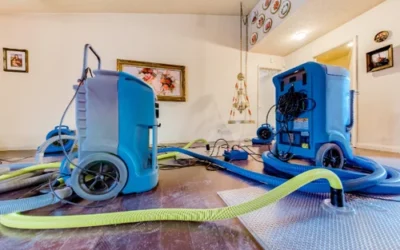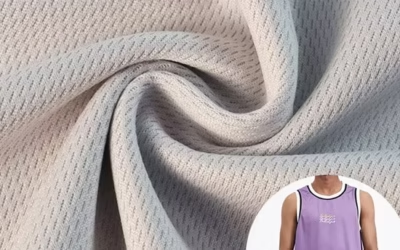How to Select the Right Team Kits for Every Sport: A Comprehensive Overview

team kitsChoosing the right team kits is essential for any sports team, whether professional or amateur. Team kits do more than just distinguish players on the field—they foster unity, represent identity, enhance performance, and sometimes even intimidate opponents. From football to basketball, cricket to cycling, the correct selection of team kits can significantly influence the experience and outcome of the game. This comprehensive guide explores the critical factors to consider when selecting team kits for every sport.
Understanding the Role of Team Kits in Sports
Team kits are much more than just uniforms. They are a blend of performance-enhancing materials, color psychology, team branding, and functionality. The right kits provide athletes with the necessary comfort and flexibility while aligning with the sport’s regulations and traditions. They can also boost morale, signal professionalism, and unify the players under a single identity.
Key Elements to Consider When Choosing Team Kits
Fabric and Material
One of the most vital aspects of a team kit is the fabric. It must offer durability, breathability, and moisture management. Different sports demand different material characteristics:
- Football and Rugby: Require durable, lightweight, and sweat-wicking fabrics.
- Basketball: Needs mesh fabrics for breathability.
- Cricket: Prefers comfortable cotton-polyester blends for long matches.
- Cycling: Demands aerodynamic, compressive, and moisture-wicking materials.
Modern kits often incorporate technologies such as antimicrobial finishes, UV protection, and quick-drying features, depending on the sport’s environment.
Fit and Comfort
The fit of a team kit directly impacts an athlete’s performance. Tight kits may enhance aerodynamics in cycling and swimming, while looser kits might be preferred in sports like baseball or cricket for better airflow and movement. Additionally, kits should allow for full range of motion, especially in sports involving jumping, swinging, or rapid directional changes.
Weather and Environment Considerations
Climate plays a major role in determining the right kit. Teams that play in hot climates need breathable and light fabrics, whereas colder environments demand layered clothing with thermal properties. For example:
- Outdoor Sports: Might require waterproof or windproof outer layers.
- Indoor Sports: Can use lighter, more breathable kits due to controlled temperatures.
Sport-Specific Requirements
Every sport has specific kit needs based on movement, regulation, and safety:
- Football: Shirts, shorts, and socks must be lightweight and sweat-resistant, while the goalkeeper’s kit needs added padding.
- Basketball: Requires sleeveless jerseys for freedom of arm movement.
- Hockey: Needs reinforced areas to protect against sticks and pucks.
- Cycling: Requires aerodynamic designs with padding in shorts for comfort during long rides.
It’s crucial to consult the governing body of the sport for specific regulations regarding uniforms.
Team Identity and Branding
Team kits are also a major part of team branding. Colors, logos, numbers, and fonts should reflect the team’s identity and spirit. A cohesive and visually striking design builds team pride and fan recognition. Customization options allow teams to stand out and build a professional image.
Choosing the Right Supplier or Manufacturer
Quality and Reliability
Look for suppliers known for high-quality stitching, vibrant color retention, and reliable delivery timelines. Reading customer reviews and checking past projects can help gauge their credibility.
Customization Options
A good supplier should offer extensive customization, including:
- Personalized names and numbers
- Color variations
- Logo embroidery or printing
- Special edition kits for events or commemorations
Pricing and Budgeting
Affordability is essential, especially for schools, amateur clubs, or community teams. It’s important to balance cost with quality. Bulk deals and sponsorships can also reduce expenses. Always get a detailed quote covering printing, shipping, and taxes to avoid hidden costs.
Durability and Maintenance
Kits should be easy to wash and maintain without losing their shape or color. Frequent washing is expected, especially in contact or outdoor sports. Stain resistance and anti-fade materials are highly recommended.
Some features that enhance durability include:
- Reinforced seams
- Sublimation printing (doesn’t peel or crack)
- High-stitch density fabrics
Safety and Regulatory Compliance
Safety standards must not be overlooked. Some sports require additional protective features built into the kit. For example:
- Rugby: Requires padding in the shoulders or chest.
- American Football: Uses integrated padding or mesh slots for external pads.
- Motorsports: Require fire-resistant materials.
Always check league or competition guidelines to ensure compliance.
Sizing for All Players
Inclusive sizing is essential. Team kits should be available in a wide range of sizes to accommodate all body types. Many professional suppliers offer sizing kits or guides to help ensure each player gets the best fit.
Proper sizing improves:
- Performance
- Comfort
- Confidence
- Team unity
Kit Accessories and Add-ons
Apart from the main uniform, team kits often include:
- Socks and gloves
- Base layers
- Tracksuits or warm-up gear
- Training bibs
- Bags and caps
Having consistent branding across all accessories enhances the team’s overall image and professionalism.
Sustainability and Eco-Friendly Options
Modern teams are increasingly opting for sustainable team kits made from recycled polyester or organic cotton. These options reduce environmental impact without compromising performance. Choosing eco-friendly suppliers also aligns with modern values and social responsibility.
Common Mistakes to Avoid
- Ignoring Player Feedback: Players know what works best during play. Always consider their comfort and preferences.
- Overlooking Regulations: Using unapproved colors or logos can lead to fines or disqualification.
- Choosing Style Over Substance: A stylish kit is good, but functionality must come first.
- Ordering Too Late: Delays in delivery can result in teams missing out on proper kits for tournaments or matches.
Conclusion
Selecting the right team kits is a multifaceted process that combines practical, aesthetic, and strategic considerations. By focusing on sport-specific needs, materials, comfort, branding, and supplier reliability, teams can ensure they are outfitted for both performance and pride.











